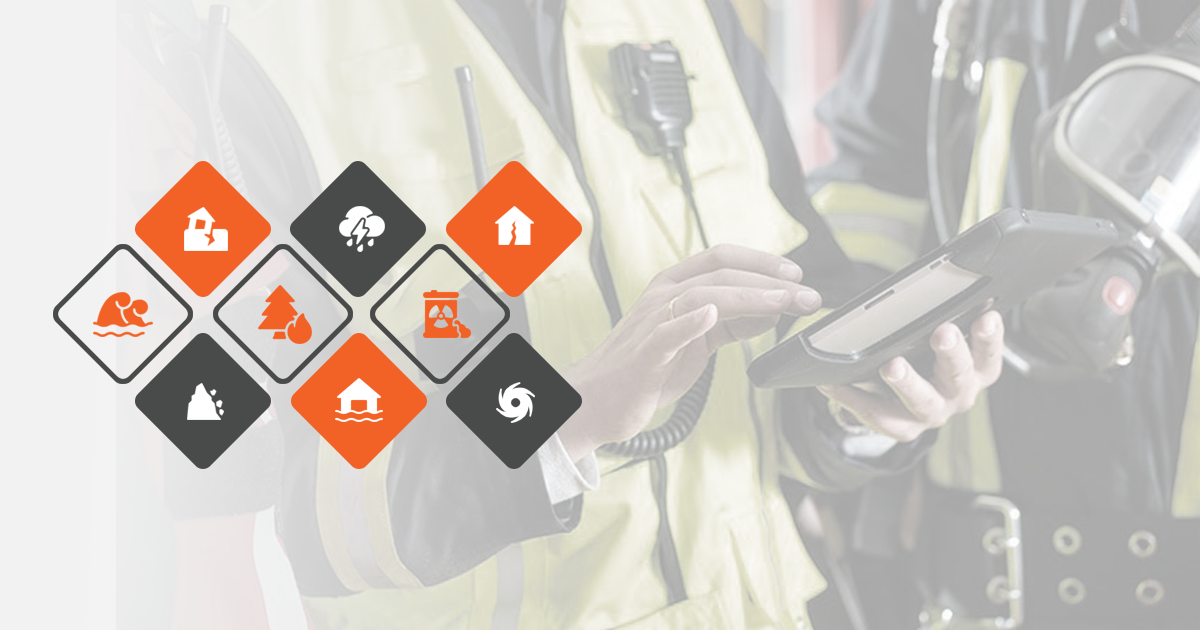How an Enterprise Video Platform Solves Emergency Management Challenges
by Nohad Ahsan, Last updated: November 25, 2025, Code:

An Enterprise Video Platform enhances emergency management solutions by enabling real-time communication, secure content sharing, and AI-powered video analytics. This blog explores how organizations can improve crisis response, disaster preparedness, and multi-agency coordination with video technology.
Emergencies demand immediate action and seamless communication, yet many organizations struggle with outdated systems that slow response times. Whether it's a natural disaster, security breach, or public health emergency, effective crisis management depends on real-time coordination and rapid information dissemination. However, communication breakdowns, lack of secure content sharing, and inefficient training can delay response efforts, putting lives at risk.
An Enterprise Video Platform provides a centralized solution for emergency management solutions, offering real-time streaming, on-demand training, and AI-powered video analytics. By integrating a Video Content Management System (VCMS), emergency teams can share critical updates instantly, train first responders remotely, and collaborate across agencies with secure video access.
This guide explores how an Enterprise Video Platform enhances disaster preparedness, improves crisis management, and ensures faster, more effective emergency response strategies when every second counts.
What Are the Key Challenges in Emergency Management?
Emergency management involves high-pressure decision-making, where even minor communication gaps can have life-altering consequences. However, many organizations still face critical challenges that hinder crisis response, disaster preparedness, and secure content sharing.
Below are some of the most pressing issues emergency teams encounter.
Communication Breakdowns in Crisis Situations
During disasters, real-time communication is crucial for coordinating response efforts. However, many agencies still rely on outdated systems that lack real-time video capabilities, leading to delays, confusion, and operational inefficiencies.
For example, during the COVID-19 pandemic, healthcare systems struggled to disseminate real-time updates due to the absence of an integrated Enterprise Video Platform. This resulted in slow decision-making and delayed response efforts, making crisis management more challenging.
A Video Content Management System (VCMS) can help eliminate these breakdowns by enabling instant video communication, secure content sharing, and live streaming to keep all teams informed in real time.
Limited Access to Training for First Responders
Emergency response teams must be well-prepared, but traditional training methods present logistical challenges. In-person training sessions are often infeasible during crises, leaving first responders underprepared when they need updated skills the most.
An Enterprise Video Platform with on-demand training modules can bridge this gap by allowing first responders to access critical training videos anytime, anywhere. This ensures that teams remain well-equipped to handle evolving emergencies without relying on time-consuming, in-person sessions.
Coordination Across Multiple Agencies
Successful crisis management requires seamless coordination between law enforcement, healthcare providers, federal agencies, and disaster response teams. However, without a centralized video communication system, agencies face conflicting instructions, duplication of efforts, and delays in critical decision-making.
A secure Enterprise Video Platform enhances multi-agency collaboration by enabling:
- Secure video sharing for critical footage, briefings, and situational reports
- Real-time live streaming to synchronize updates across different organizations
- Faceted search tools to help teams quickly retrieve essential crisis response videos
With these capabilities, agencies can eliminate communication silos and improve disaster preparedness for faster, more effective emergency response.
Access to Real-Time Data and Analytics
Data-driven decision-making is critical for disaster preparedness and emergency response. However, many agencies operate with siloed data systems that prevent the real-time sharing of critical information. This lack of instant access can lead to delayed decisions and inefficient resource allocation.
A modern Enterprise Video Platform integrates with AI-powered analytics, allowing emergency teams to:
- Monitor drone and surveillance feeds for situational awareness
- Analyze AI-generated insights for predictive emergency planning
- Share crisis updates across multiple agencies
By leveraging video analytics, emergency teams can make proactive, data-driven decisions that enhance public safety and crisis response effectiveness.
How Can an Enterprise Video Platform Solve These Challenges?
An Enterprise Video Platform tailored for emergency management solutions provides a centralized, agile system for real-time communication, on-demand training, and secure content sharing.
These platforms empower emergency teams with faster decision-making, enhanced coordination, and AI-driven insights, helping them respond effectively to crises.
Let’s explore how this technology tackles key emergency management challenges.
Seamless Communication During Crises
Timely and effective communication is critical in emergency situations. However, traditional communication tools often lack real video streaming and instant content distribution, leading to delays in response efforts.
An Enterprise Video Platform ensures:
- Real-time broadcasting of emergency updates, press briefings, and situational reports
- Secure live video streaming for coordination between emergency response teams
- Instant video livestreaming to synchronize agencies and prevent miscommunication
For example, during natural disasters or security incidents, a Video Content Management System (VCMS) enables organizations to rapidly disseminate crucial information and ensure that teams remain coordinated when every second counts.
Scalable and On-Demand Training for First Responders
Disaster preparedness requires continuous training, yet traditional in-person training is logistically challenging and time-consuming. An Enterprise Video Platform makes on-demand training accessible anytime, anywhere, ensuring first responders are always prepared.
With AI-powered video capabilities, agencies can:
- Deliver interactive training programs with quizzes, assessments, and certifications
- Provide just-in-time learning for evolving emergency protocols
- Ensure rapid skill development through recorded drills and scenario-based training
This scalable, video-driven training approach enhances crisis management preparedness, keeping first responders up to date with the latest response techniques and procedures.
Enhanced Collaboration Between Agencies
Multi-agency coordination is essential during emergencies, yet fragmented communication systems often create bottlenecks. An Enterprise Video Platform eliminates these barriers by enabling:
- Secure content sharing across law enforcement, healthcare teams, and disaster relief agencies
- Access controls for restricted access to critical footage and briefings
- AI-powered search to quickly locate procedural updates, training materials, and real-time reports
By standardizing video-based communication, emergency teams can reduce duplication of efforts and improve response time, ensuring seamless coordination across multiple agencies.
Real-Time Data and Analytics for Smarter Decision-Making
Access to real-time data is crucial for emergency teams to assess risks and allocate resources efficiently. An Enterprise Video Platform with AI-powered analytics helps agencies:
- Monitor video feeds from drones, body cams, and surveillance systems
- Analyze video content for incidents like crowd movement, fire outbreaks, or hazardous zones
- Utilize predictive analytics for proactive crisis management and disaster preparedness
For example, VIDIZMO’s AI-based video platform enables emergency teams to automatically detect key events in video footage, providing instant situational insights to improve decision-making.
The Role of AI in Emergency Management Video Platforms
Artificial Intelligence (AI) is revolutionizing emergency management solutions, enhancing the way agencies analyze, respond to, and prepare for crises. By integrating AI-driven automation, real-time analytics, and predictive insights, an Enterprise Video Platform enables emergency teams to make faster, data-driven decisions that can save lives.
Automated Video Analysis for Rapid Decision-Making
During an emergency, instant access to real-time visual data is critical. AI-powered video content management systems (VCMS) can:
- Analyze video feeds from drones, security cameras, and body cams
- Detect critical events such as fires, floods, or security breaches
- Send automatic alerts to command centers for faster decision-making
For example, AI-driven facial recognition can assist in identifying missing persons during a disaster, significantly accelerating search and rescue efforts.
Real-Time Transcriptions and Multilingual Support
Language barriers can slow down communication during crises, particularly in international emergencies. AI-powered Enterprise Video Platforms can:
- Automatically transcribe and translate video communications in real-time
- Enable multilingual support for first responders, victims, and decision-makers
- Ensure accessibility of critical information across diverse populations
This capability ensures that emergency teams can relay crucial updates clearly, regardless of the language spoken by affected communities.
Predictive Analytics for Better Preparedness
AI-driven predictive analytics helps agencies forecast potential crises by analyzing historical data, weather conditions, and population movement. This enables:
- Strategic resource allocation to deploy personnel and equipment where they’re needed most
- Proactive risk assessment to mitigate disasters before they escalate
- Data-backed decision-making for emergency planning and disaster response
For example, AI-integrated video archives allow professionals to quickly review past crisis footage, extract insights, and improve emergency preparedness strategies.
Artificial intelligence (AI) is no longer just a buzzword—it’s a powerful tool transforming emergency management. Integrating AI into an enterprise video platform can elevate the way agencies respond to emergencies.
Transforming Emergency Management with an Enterprise Video Platform
In high-stakes emergency situations, effective communication, real-time data access, and coordinated response efforts can mean the difference between chaos and control. Traditional crisis management methods often fall short due to delayed updates, fragmented training, and siloed information systems, leaving emergency teams struggling to make fast, informed decisions.
An AI-powered Enterprise Video Platform addresses these challenges by providing seamless real-time communication, scalable training solutions, and advanced video analytics to enhance emergency response.
By leveraging secure content sharing, predictive AI insights, and on-demand learning, organizations can improve crisis preparedness, accelerate decision-making, and streamline multi-agency collaboration when it matters most.
As disaster preparedness and crisis management continue to evolve, investing in AI-driven video technology is no longer optional—it is essential for ensuring faster, more efficient, and more effective emergency response strategies.
Be prepared for any crisis. Explore how a VIDIZMO EnterpriseTube can revolutionize your emergency management solutions today.
People Also Ask
What is an Enterprise Video Platform for Emergency Management?
An Enterprise Video Platform is a centralized system that enables real-time communication, secure content sharing, and AI-powered video analytics for emergency management solutions. It helps organizations improve crisis response, disaster preparedness, and multi-agency coordination.
How does an Enterprise Video Platform improve crisis communication?
An Enterprise Video Platform enhances crisis management by offering live video streaming, secure content sharing, and automated alerts. Emergency teams can broadcast situational updates, conduct virtual briefings, and ensure all stakeholders receive critical information in real-time.
Why is AI important in emergency management video platforms?
AI-powered Enterprise Video Platforms analyze live video feeds, automate transcriptions, detect crisis patterns, and provide predictive analytics. These capabilities allow emergency teams to make faster, data-driven decisions and improve overall disaster preparedness.
Can an Enterprise Video Platform be used for first responder training?
Yes, an Enterprise Video Platform enables on-demand and live training for first responders. Agencies can upload training videos, conduct virtual simulations, and assess performance through AI-driven analytics, ensuring teams are well-prepared for any emergency.
How does an Enterprise Video Platform support multi-agency coordination?
Emergency response often requires collaboration between law enforcement, healthcare agencies, and disaster relief teams. A Video Content Management System (VCMS) ensures secure video sharing, centralized data access, and seamless communication, reducing miscoordination and improving response times.
What are the key benefits of using an Enterprise Video Platform for disaster preparedness?
A Video Content Management System helps agencies:
- Provide real-time emergency updates via live streaming.
- Host scalable training programs for disaster response teams.
- Analyze AI-powered video insights for proactive crisis management.
- Enhance collaboration with secure video sharing between agencies.
How does AI-driven video analytics help in crisis decision-making?
AI-powered video analytics can detect fires, floods, suspicious activity, or crowd movement, providing real-time alerts to emergency teams. This helps in proactive disaster management by ensuring resources are allocated efficiently.
What security measures are in place for an Enterprise Video Platform?
A secure content-sharing system ensures that only authorized users can access critical video data. Features like role-based permissions, encryption, and compliance controls help organizations maintain data security in emergency response efforts.
Can an Enterprise Video Platform integrate with other emergency management systems?
Yes, most Enterprise Video Platforms offer API integrations with disaster management software, GIS mapping tools, surveillance systems, and AI-driven analytics, ensuring seamless interoperability for faster decision-making.
Why should organizations invest in an Enterprise Video Platform for crisis response?
An Enterprise Video Platform provides real-time communication, AI-driven insights, and scalable training solutions, ensuring agencies can respond faster, improve coordination, and enhance disaster preparedness. Investing in this technology leads to more effective emergency management solutions.
Jump to
You May Also Like
These Related Stories

Just-in-Time Training with a Video Training Platform

10 Reasons Why Schools Should Use a Video Sharing Platform




No Comments Yet
Let us know what you think